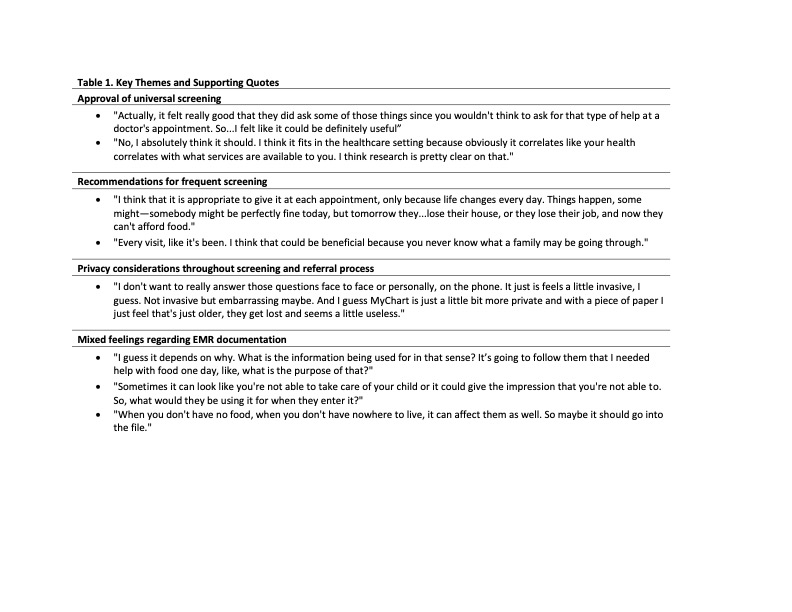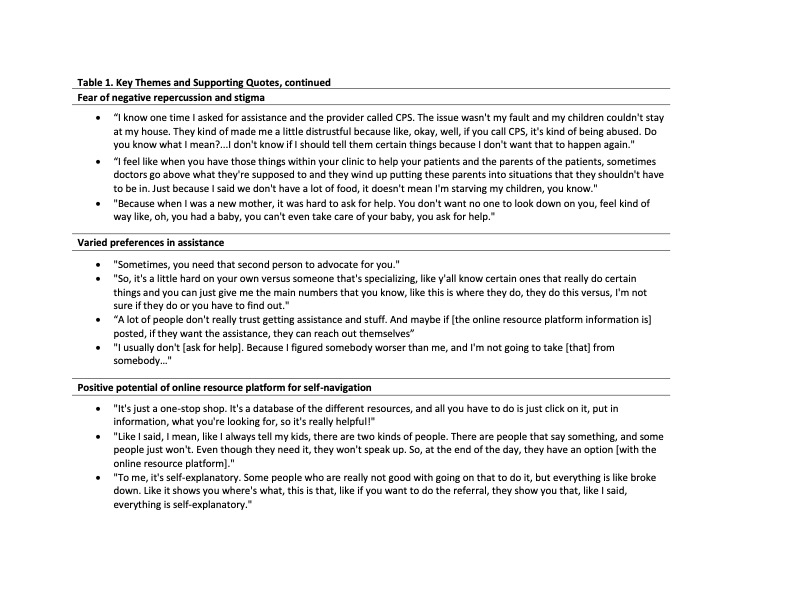Health Equity/Social Determinants of Health
Session: Health Equity/Social Determinants of Health 6
283 - Caregiver Perspectives on Social Needs Screening, Documentation, and Resource Navigation
Sunday, May 5, 2024
3:30 PM - 6:00 PM ET
Poster Number: 283
Publication Number: 283.2061
Publication Number: 283.2061

Hanae Fujii-Rios, MD MPH (she/her/hers)
Assistant Professor
Johns Hopkins University School of Medicine
Baltimore, Maryland, United States
Presenting Author(s)
Background: In response to new regulatory requirements, health systems are scaling up or implementing new health-related social needs (HRSN) screening programs. To our knowledge, there has been limited research assessing family perspectives for screening, electronic medical record (EMR) documentation, and provision of resources.
Objective: To explore caregivers’ experiences with and preferences for HRSN screening and community resource referral mechanisms, use of a patient-facing, web-based community resource database, and EMR documentation of HRSNs.
Design/Methods: Focus groups and semi-structured interviews were conducted with English speaking caregivers of pediatric patients receiving primary care in an academic practice in Baltimore, MD. Interview and focus group guides were developed by content and qualitative research experts. Guides contained open-ended questions and were adapted throughout the study. Focus groups and interviews were conducted by trained facilitators, recorded and transcribed by a professional service. A coding tree was developed and modified using an iterative process. All transcripts were double coded by two trained study team members. Disagreements in coding were resolved by consensus among three study team members. Memos of coding decisions were kept to provide consistency in coding. Interviews were conducted until thematic saturation was reached.
Results: Three focus groups and 21 interviews were conducted using a virtual platform. We identified 7 main themes: 1) Approval of universal screening; 2) Support for frequent screening; 3) Privacy considerations throughout screening and referral process; 4) Mixed feelings regarding EMR documentation; 5) Fear of negative repercussion and stigma; 6) Varied preferences in assistance; and 7) Positive potential of online resource platform for self-navigation.
Conclusion(s): Caregivers appreciated and understood the need for HRSN screening while raising important privacy concerns about how screening is performed and documented in the EMR. Patient and family input must be solicited and incorporated into HSRN screening initiatives. Expanding studies to include diverse backgrounds (e.g. limited English proficiency, mixed immigration status families, patients of various subspecialties, etc.) will help further inform how to address HRSNs that is patient-centered and acceptable.


